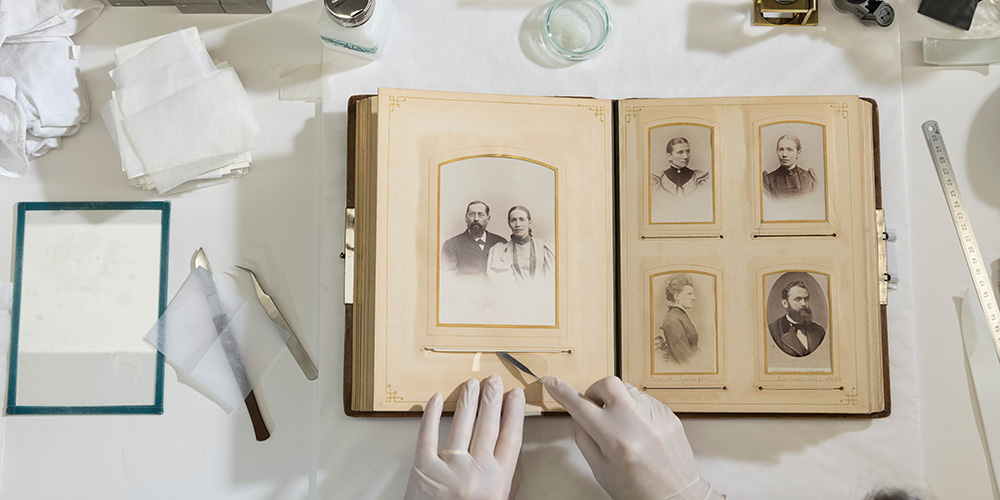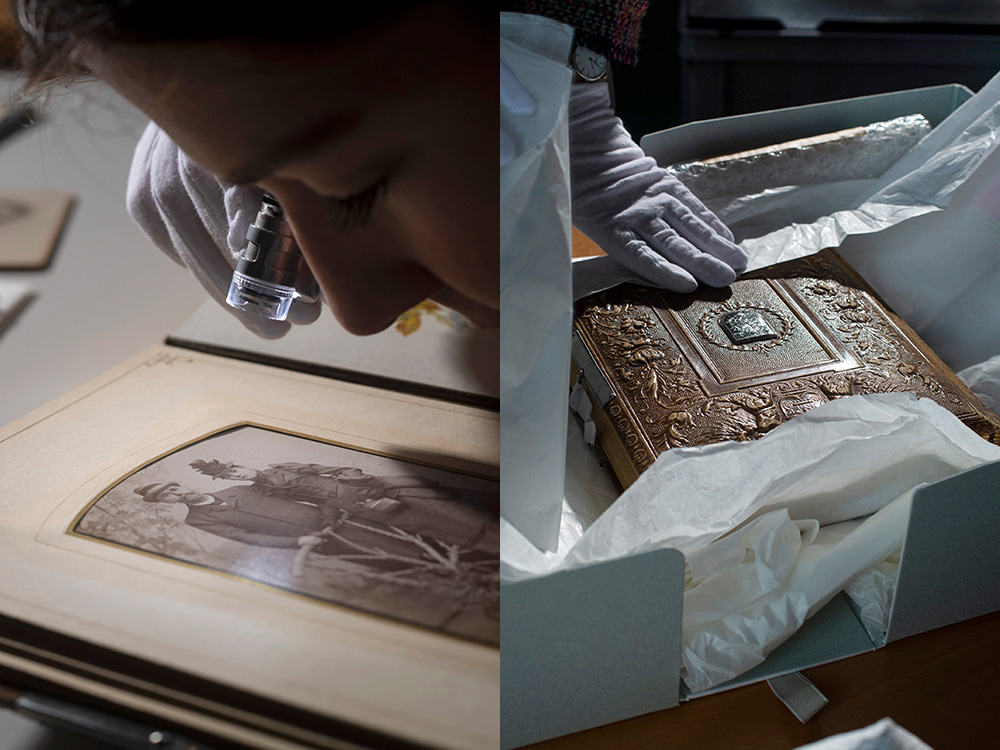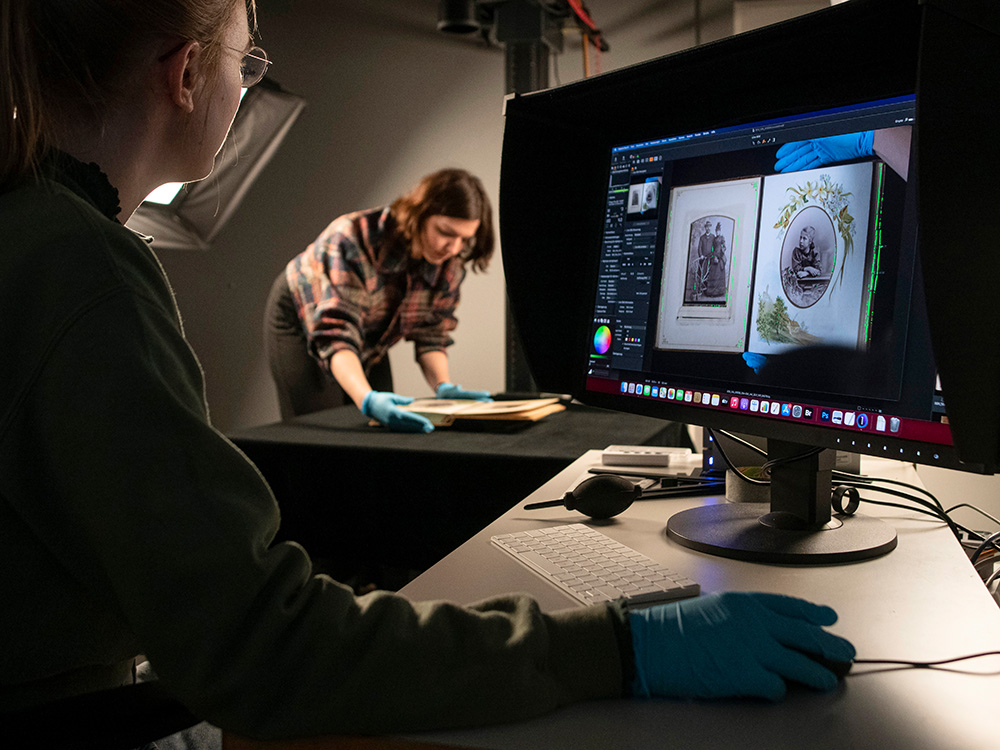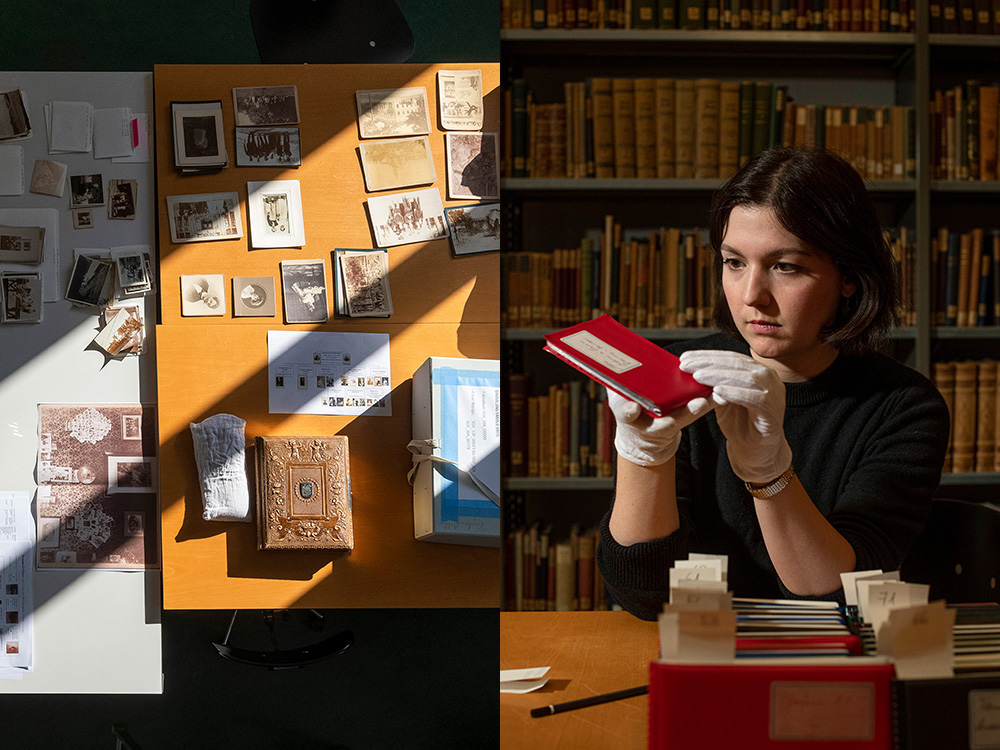Pictures of time – photo albums in flux.
Text: Noëmi Kern
For her dissertation, Murielle Cornut is studying the photo album as a cultural technology.
She is focusing specifically on albums of Basel’s Kreis family, which are part of the collection of the Swiss Society for Folklore Studies (Schweizerische Gesellschaft für Volkskunde). The Kreis collection comprises 93 photo albums from the period spanning 1880 to 1980. These albums can be used to track how photography and the practice of storing images have changed over time.
A photo album is more than just a book full of pictures. In the case of matted albums, the inscribed back sides of the portraits known as carte de visite can only be seen when photo restoration specialist Regula Anklin removes them from the album at her studio. Examining these provides insights into the network of the person who compiled the album.
Within the scope of her research project, entitled “Analog and digital image structures in photo albums 1880 – 1980. Seeing, collecting, exchanging, inheriting,” Murielle Cornut studies both sides of the photos with equal attention.
Viewing the pictures through a loupe reveals, among other things, the technique used to take the photographs and the materials they were printed on. Details such as these offer clues that might help date the photographs or provide information on the family’s relationship to photography. The loupe can also uncover faded and retouched areas. This brings the images to life and reveals more than might be assumed at first glance.
Private photo albums are everyday objects and therefore part of the history of people’s daily lives. The early photo albums from the Kreis family collection are extravagantly designed with ornate leather bindings and a plate containing the owner’s initials. These albums were not simply left on a shelf, but rather displayed – perhaps on a table in the drawing room – for others to see.
To understand the cultural technology of photography, studying the object itself is just as important as analyzing the content of the images. How much does the album weigh? What traces of use are visible on the object? What is our body language when we view the object?
Alexandra Tschakert and Laura Citaku of the Digital Humanities Lab are responsible for digitalizing the photo albums. Whether the albums are ostentatious or ordinary, each one is a repository of knowledge and values on multiple levels – biographical information, social knowledge about class- and gender-specific behavioral patterns or information on the history of the photography industry.
Through digitalization, the three-dimensional original is used to create a two-dimensional reproduction. This is in itself an important part of the objects, and it reveals additional information. When personal photo albums are available online, this fundamentally changes the conditions under which they are viewed. Very few people will ever come in contact with the analog originals.
Murielle Cornut inspects, among other things, how the albums were designed and how these designs impact or even prescribe the ways in which photos are arranged. These designs change over time. Cornut also looks at the photographs that did not make it into the album but were simply placed loosely inside the book. By comparing the images, Cornut recognizes the same people in different pictures and spots photos in the background of other photos. In this way, she can make connections and discover new parts of the story.
The Kreis collection is representative of the history of private photo albums in the 20th century. Professional photos taken in studios are usually mounted in matted albums. The collection also includes travel and family albums with different formats and bindings, A4 albums documenting daily life between 1950 and 1965 and plastic albums with 9 x 13 cm pockets filled with color photos from the 1980s.
The practice of creating a photo album anticipates the fact that memories of past events fade over time. The photos keep these stories intact. Today, most people store their private photo archives on their phone, in the cloud and on social media.
In her courses, Murielle Cornut talks with students about how they interact with pictures. Examining historical material should prompt them to think about the cultural inheritance of the future. What will we remember 100 years from now? And what might we be better off forgetting? Yet in the end, says Cornut, there is always an element of luck involved in whether a photograph stands the test of time.
Murielle Cornut is a doctoral researcher in cultural studies and European ethnology at the University of Basel. She is using the collection of the Kreis family to study the extent to which photo albums function as a medium for memory capable of generating order, meaning and identity. Cornut is completing her dissertation as part of the Swiss National Science Foundation's Sinergia project Participatory Knowledge Practices in Analogue and Digital Image Archives.
More articles in this issue of UNI NOVA (May 2023).





